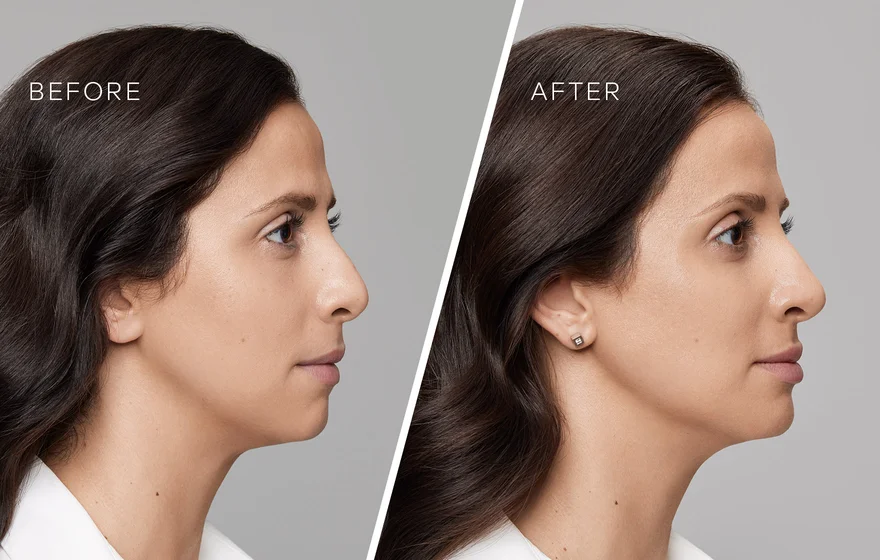How Long Does Chin Filler Last?
Chin fillers have gained popularity as a non-surgical option for enhancing facial aesthetics, particularly in defining the chin and jawline. As with any cosmetic procedure, one of the most common questions patients ask is, “How long does chin filler last?” This article will explore the various types of chin fillers, their longevity, factors affecting their duration, and what to expect from the treatment. We will also provide a comprehensive FAQ section to address common concerns.
Overview of Chin Fillers
Chin fillers are injectable substances designed to enhance the contour and volume of the chin area. They are primarily used to:
- Improve facial symmetry
- Add definition to a weak chin
- Enhance the jawline
- Restore volume lost due to aging
Types of Chin Fillers
The most common types of fillers used for chin augmentation are:
| Filler Type | Duration | Description |
|---|---|---|
| Hyaluronic Acid Fillers | 6 to 12 months | Temporary fillers that add volume and hydration; examples include Juvederm and Restylane. |
| Calcium Hydroxylapatite | 12 to 18 months | A thicker filler that provides more structure; commonly known as Radiesse. |
| Poly-L-lactic Acid | 2 to 5 years | A biostimulatory filler that encourages collagen production; known as Sculptra. |
| Fat Grafting | Long-lasting (1-3 years) | Involves transferring fat from another part of the body to the chin; results can vary. |
How Long Does Chin Filler Last?
The longevity of chin fillers can vary significantly based on several factors, including the type of filler used, individual metabolism, and lifestyle choices.
General Duration Estimates
- Hyaluronic Acid Fillers: Typically last between 6 to 12 months. These fillers are popular due to their safety profile and reversible nature.
- Calcium Hydroxylapatite: Lasts approximately 12 to 18 months. This filler provides a more substantial lift and is often used for deeper wrinkles and volume loss.
- Poly-L-lactic Acid: Can last between 2 to 5 years as it stimulates collagen production, providing gradual and natural-looking results.
- Fat Grafting: Results can last from 1 to 3 years, depending on how well the fat integrates into the surrounding tissue.
Factors Affecting Longevity
Several factors can influence how long chin fillers last:
- Metabolism: Individuals with a faster metabolism may break down fillers more quickly, leading to shorter-lasting results.
- Age: Younger individuals generally have more collagen and elastin in their skin, which may help fillers last longer.
- Lifestyle Choices: Factors such as smoking, sun exposure, and diet can impact the longevity of fillers. A healthy lifestyle can promote better skin health and prolong the effects of fillers.
- Amount of Filler Used: The volume of filler injected can also affect how long it lasts. More extensive treatments may provide longer-lasting results initially but can also be metabolized faster.
- Injection Technique: The skill of the injector plays a crucial role in how well the filler integrates into the tissue and how long it lasts.
What to Expect After Treatment
Immediate Results
After receiving chin fillers, patients can expect to see immediate results. The chin will appear fuller and more defined, enhancing facial symmetry. However, some swelling and bruising may occur, which typically subsides within a few days.
Long-Term Effects
As time passes, the filler will gradually break down and be absorbed by the body. Patients may notice a slow decrease in volume, and it is essential to schedule follow-up appointments to assess the need for touch-ups.
Maintenance
To maintain the desired results, patients may need to undergo additional treatments. The frequency of these treatments will depend on the type of filler used and individual factors.
Pros and Cons of Chin Fillers
Advantages
- Non-Surgical: Chin fillers provide a non-invasive alternative to surgical procedures, with minimal downtime.
- Immediate Results: Patients can see results right after the treatment.
- Reversible: Hyaluronic acid fillers can be dissolved if the patient is unhappy with the results.
Disadvantages
- Temporary: Fillers are not permanent solutions, requiring ongoing maintenance.
- Potential Side Effects: Common side effects include swelling, bruising, and in rare cases, more severe complications.
- Cost: The cost of fillers can add up over time, particularly with regular touch-ups.
Conclusion
Chin fillers offer a versatile and effective way to enhance facial aesthetics without the need for surgery. While the duration of chin fillers can vary based on several factors, understanding these variables can help patients set realistic expectations for their results. Regular maintenance and consultations with qualified professionals are essential for achieving the best outcomes.
FAQ Section
How long do chin fillers last?
Chin fillers typically last between 6 to 18 months, depending on the type of filler used and individual factors.
What are the different types of chin fillers?
Common types of chin fillers include hyaluronic acid fillers (6-12 months), calcium hydroxylapatite (12-18 months), and poly-L-lactic acid (2-5 years).
What factors affect the longevity of chin fillers?
Factors include metabolism, age, lifestyle choices, the amount of filler used, and the injection technique.
Are chin fillers safe?
Yes, chin fillers are generally considered safe when administered by a qualified professional. However, like any medical procedure, they carry some risks.
Can I see immediate results after getting chin fillers?
Yes, patients can expect to see immediate results after the treatment, although some swelling may occur.
How often do I need touch-ups?
The frequency of touch-ups will depend on the type of filler used and individual metabolism, but typically every 6 to 18 months.
Where can I find more information about chin fillers?
For more detailed information, you can visit the official website or check the Wikipedia entry on dermal fillers.Wikipedia Link: Dermal Filler



